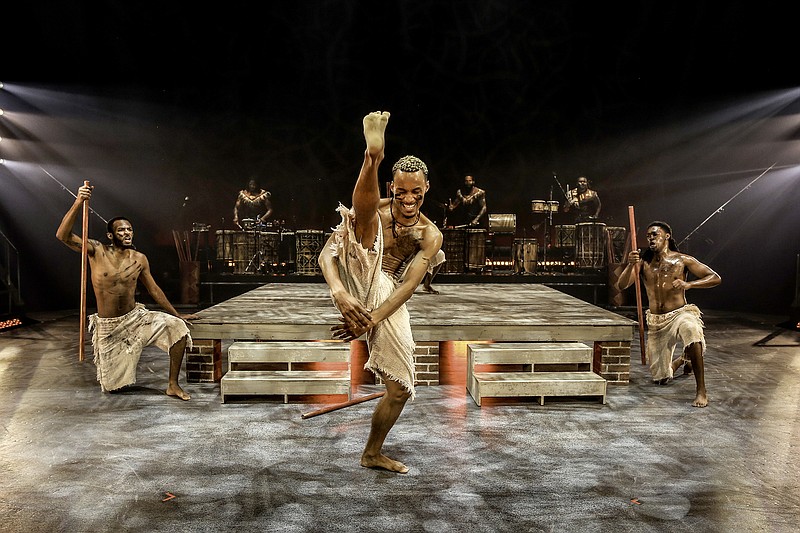Feet face a host of challenges in summer, from more walking, running and hiking to minimalist footwear.
Once-protected toes and arches might feel liberated in sandals and flip-flops, but these all put hard-working lower extremities at risk.
Dancers know a lot about sore feet.
Barring debilitating pain, they can't stop working because of aching or blistered feet. So, they tend to be highly practical when it comes to foot care, with hard-won wisdom about wounds, shoes, exercises, remedies for everything from friction to funk, and ways to turn drugstore items into therapeutic tools.
This is wisdom the rest of us can use, too.
"I have had broken toes, stress fractures, broken feet and ankles," says Elizabeth Burke, 30, a founding member of the tap company Dorrance Dance. "I had an ingrown toenail surgically removed, just this tiny little thing, but if I barely tapped the corner of my nail I'd see stars, it was so painful."
ARCH SUPPORTS
Her first requirement is arch support, especially because she has flat feet. She suffered leg pain as a child because her flat feet allowed her ankles to roll inward, which put strain on her knees. Supportive inserts solved the problem.
"I'm never in a shoe that doesn't have a supportive measure in it," Burke says.
For many dancers, flip-flops and ballet flats are also a flat-out no.
"Flat shoes? Oh, my goodness," says New York City Ballet star Tiler Peck. "We're constantly told by our physical therapists to make sure you have an arch support." She uses drugstore inserts in her sneakers and tops them off with a heel lift made by AliMed, a supplier of medical products.
"They give your calves a rest," Peck says. Heel lifts are not high heels. "It's just a little, half-circle thing that lifts your heel up just a bit."
Burke is also a fan of inexpensive inserts, and uses Dr. Scholl's in her street shoes. For her tap shoes, she likes SuperFeet, a runners' brand.
CLOSED-TOE SHOES AND GAUZE
After stubbing a big toe on her coffee table, Burke never goes barefoot. She wears Adidas "Adissage" slides around the house; otherwise, strictly stable, closed-toe footwear.
New tap shoes can cause blisters. To prevent them, Burke sticks squares of Elastikon elastic tape on her heels "like a Band-Aid," she says. "It does wonders." If she gets a blister, she covers it with Compeed hydrocolloid blister cushions.
Since tap shoes get sweaty and funky, she airs them on a windowsill and stuffs them with charcoal bags made for shoes.
Burke also swipes her feet with a baby wipe "to take the edge off, so you're not offending everyone," she says, and every night, she dunks them in a bucket of warm water and Epsom salts.
Kathryn Boren, a corps de ballet member of American Ballet Theatre, has Door Dash deliver ice to her apartment after shows. Out comes the bucket, in goes the ice, and she buries her legs up to the calf.
I spoke to her on her first day off in four weeks of dancing. She'd been onstage every night, for "Swan Lake," "Don Quixote" and other ballets during the company's summer season at the Metropolitan Opera House.
She recently recovered from a painfully infected corn between her toes, from friction of the toe bones caused by sweaty, swollen feet in pointe shoes. She missed a few rehearsals and the corn got better, then it flared up again after "Swan Lake," making the rest of her performances torture.
You don't have to be a dancer to develop corns. Any tight-fitting shoe can cause them.
OVER-THE-COUNTER MEDICINE
Antibiotics and Epsom salt soaks eventually healed Boren's foot. To keep the site clean, she avoids open-toed shoes, preferring to cover her toes in sterile gauze and tuck them into sneakers.
Boren says, "I did have to wear a pair of high heels to my sister's wedding, and I hated every minute of it. For me and most of my friends, they're more painful than pointe shoes. I think it's the awkward pressure and posture, and your calves don't get any stretch."
Peck recently took a chance on a sporty sandal called Sorel X Prana Explorer Blitz Stride, with a wedge sole and thick cushioning. They were comfortable, she says.
If an ache flares up, she likes T-Relief Arnica +12, a homeopathic cream, for soothing joints and muscles, and a dab of Orajel, the toothache cream, can help numb an angry corn. But her "main secret," Peck says, is regular pedicures.
Jordan Spry, assistant artistic director of Step Afrika, is a fan of foot massage. After a hard-hitting performance of the percussive art of stepping, "having someone roll and massage my feet — that may be the last place we think of getting a massage, but dancers love them."
Especially steppers, because there's no dance shoe made especially for them. Step Afrika dancers occasionally perform barefoot, but mostly they're in hard-soled dress shoes, "like you might wear to church," Spry says. "We go for sound over comfort, which can be tough."
Often, aching feet are not the whole story.
"Everything is entwined," says Ashwini Ramaswamy, a performer and choreographer in the Minneapolis-based Ragamala Dance Company, which specializes in Bharatanatyam, an Indian classical dance performed in bare feet.
The art form has taught her that happy feet stem from attention to the broader musculoskeletal system. To help her feet, she exercises her glutes and outer leg muscles. Simply rising up and down on the ball of the foot works the outer leg, and forearm side planks strengthen the tendon under the arch as well as the leg muscles. Exercises that work the inner and outer thighs help support the knees, which can be strained by poor alignment over the feet.
If her feet complain after dancing, Ramaswamy likes to roll them over a frozen water bottle. "But I find I have to do that less and less now that I'm working on these other muscles," she says.
